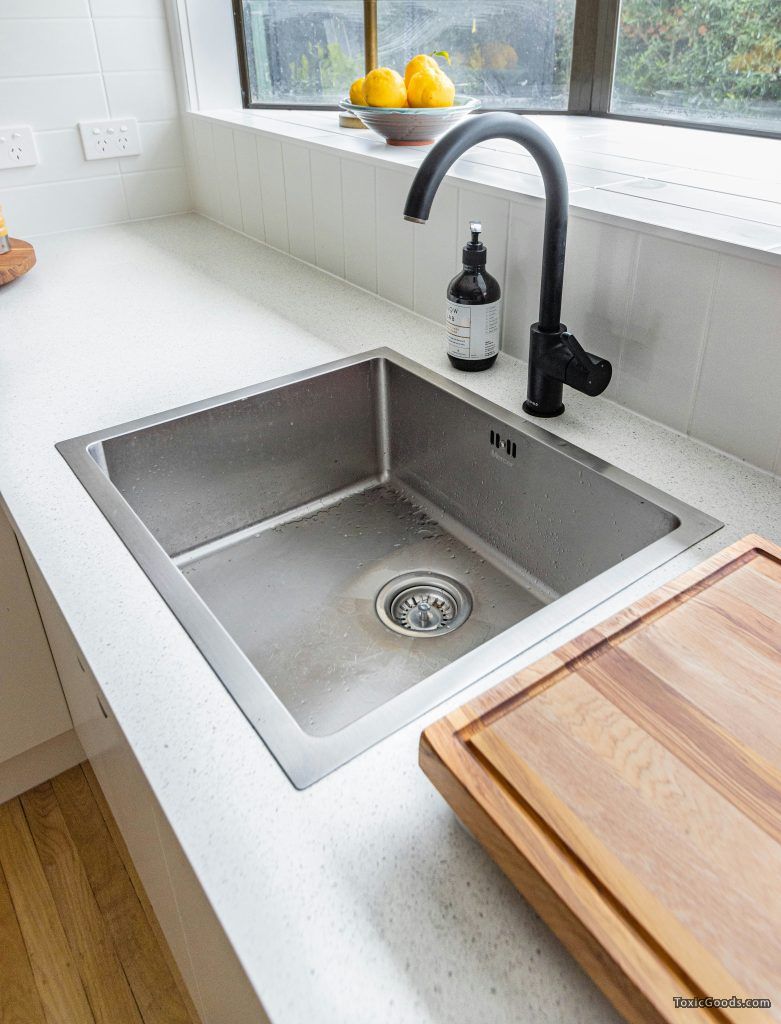Drain Cleaners: The Hidden Toxins in Your Plumbing
Drain cleaners are a common household item, often relied upon to tackle stubborn clogs in sinks, showers, and toilets. While they may seem like a quick fix for plumbing issues, the chemicals in these products are far from harmless. Drain cleaners are highly toxic, posing serious risks to human health, pets, and the environment. Understanding their dangers is crucial, especially since many people don’t realize how hazardous they can be, even when used as directed.
Most drain cleaners contain a mix of corrosive chemicals, such as sodium hydroxide (lye), sulfuric acid, or bleach. These substances work by generating heat or chemical reactions to dissolve organic matter like hair, grease, and food particles. However, the same properties that make them effective at clearing clogs also make them extremely dangerous. Even a small splash or accidental inhalation can cause severe harm.
What Happens When Drain Cleaners Come into Contact with the Body?
The effects of drain cleaner toxicity depend on the type of chemical and the route of exposure. Skin contact with these substances can cause chemical burns, redness, and blistering. If splashed into the eyes, they can lead to severe irritation, corneal damage, and even blindness. Inhalation of fumes can irritate the respiratory tract, causing coughing, shortness of breath, and in severe cases, pulmonary edema.
Ingestion is the most dangerous form of exposure. Swallowing even a small amount of drain cleaner can cause burns to the mouth, throat, and stomach, leading to intense pain, vomiting, and internal bleeding. In extreme cases, it can result in perforation of the digestive tract, shock, or death. Children and pets are particularly vulnerable, as they may accidentally ingest or spill these products.
The Environmental Impact of Drain Cleaners
Drain cleaners don’t just harm humans—they’re also toxic to the environment. When poured down the drain, these chemicals can contaminate water systems, harming aquatic life and disrupting ecosystems. Sodium hydroxide and sulfuric acid, for example, can alter the pH of water, making it uninhabitable for fish and other organisms. Additionally, the production and disposal of these chemicals contribute to pollution and environmental degradation.
Why Drain Cleaners Are Too Dangerous for Home Use
 One of the biggest risks of drain cleaners is their unpredictability. When mixed with other substances, such as bleach or ammonia, they can produce toxic gases like chlorine or chloramine, which can cause severe respiratory distress. Even when used alone, their corrosive nature makes them a hazard to plumbing pipes, potentially leading to leaks or damage over time.
One of the biggest risks of drain cleaners is their unpredictability. When mixed with other substances, such as bleach or ammonia, they can produce toxic gases like chlorine or chloramine, which can cause severe respiratory distress. Even when used alone, their corrosive nature makes them a hazard to plumbing pipes, potentially leading to leaks or damage over time.
Given these dangers, many experts recommend avoiding chemical drain cleaners altogether. Safer alternatives, such as enzymatic cleaners, baking soda and vinegar, or mechanical tools like drain snakes, can often achieve the same results without the associated risks.
Symptoms of Drain Cleaner Toxicity
Recognizing the symptoms of drain cleaner toxicity is critical for prompt treatment. Common signs include burns, pain, and swelling at the site of contact. Inhalation can cause coughing, wheezing, and difficulty breathing, while ingestion may result in nausea, vomiting, and abdominal pain. If you suspect exposure to drain cleaner, seek medical attention immediately.
In conclusion, while drain cleaners may seem like a convenient solution, their toxicity makes them a hazardous choice for home use. The risks to human health, pets, and the environment far outweigh their benefits. By opting for safer alternatives, you can protect your family and the planet from the dangers of chemical drain cleaners.
Chemical Properties, Specifications, and Effects of Drain Cleaners
| Property | Specification/Value |
|---|---|
| Common Chemicals | Sodium hydroxide (lye), sulfuric acid, bleach |
| Appearance | Liquid or granular form |
| Odor | Pungent, chemical-like |
| pH | Highly alkaline (sodium hydroxide) or highly acidic (sulfuric acid) |
| Corrosivity | Extremely corrosive to skin, eyes, and tissues |
| Reactivity | Reacts violently with water, acids, or other chemicals |
| Toxicity | Toxic if inhaled, ingested, or absorbed through skin |
| Environmental Impact | Harmful to aquatic life; contaminates water systems |
References and Sources
- National Capital Poison Center
This resource provides detailed information on the dangers of drain cleaners and first aid measures for exposure.
URL: https://www.poison.org/articles/whats-in-drain-cleaner - Centers for Disease Control and Prevention (CDC)
The CDC offers safety guidelines and health information on exposure to corrosive chemicals like those in drain cleaners. - Environmental Protection Agency (EPA)
The EPA outlines the environmental impact of household chemicals, including drain cleaners, and suggests safer alternatives.
URL: https://www.epa.gov/saferchoice
